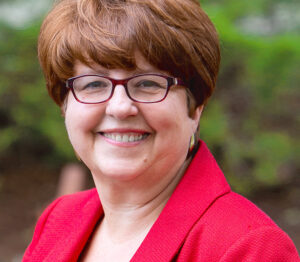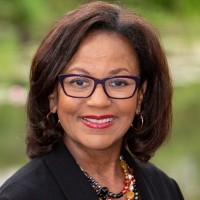
By Bonnie Devlin, Managing Principal, Washburn & McGoldrick

Carla Willis, Managing Principal, Washburn & McGoldrick
Over the years, women’s philanthropy has grown to be a powerful force in many higher education institutions and independent schools. With more women taking leadership roles in corporate boardrooms, entrepreneurial endeavors and in philanthropic initiatives, their contributions are reshaping how institutions engage with their female donors. Bonnie Devlin and Carla Willis, Managing Principals at Washburn & McGoldrick, share their keen insights into this trend and its implications for colleges, universities, and independent schools.
The Rise of Women’s Philanthropy
Women’s philanthropy is on the rise, and it’s changing the traditional narrative of giving. Think Mackenzie Scott and Melinda Gates — and a host of other generous women philanthropists. Studies show that women are more likely than men to engage in philanthropic activities, especially in education and community development. According to a recent study by Fidelity, women are in charge of philanthropic decisions in more than 70% of all US households. This shift isn’t just about the amount of money donated; it’s also about the strategic approach women take in their philanthropic efforts.
Bonnie Devlin emphasizes that women often prioritize causes that resonate with their personal experiences and values. “Women tend to give in ways that reflect their lived experiences, often focusing on education, health, and social justice,” she notes. This nuanced understanding of giving is driving a more holistic approach to philanthropy in educational institutions.
Collaborative Giving and Community Impact
One of the most significant trends in women’s philanthropy is the emphasis on collaboration. Carla Willis highlights that women are increasingly forming networks to pool resources and amplify their impact. “When women come together to support a cause, they not only increase their financial contributions but also create a community of support that enhances the effectiveness of their giving,” she explains.
This sense of community is particularly important in educational settings. Women-led initiatives often focus on scholarship funds, mentorship programs, and leadership development for young women in schools and universities. By fostering these programs, women philanthropists are not just providing financial support; they are creating pathways for future generations to succeed. She noted a scholarship fund founded by her sorority and the satisfaction she gets from supporting that effort.
Engaging Women in Philanthropic Leadership
Colleges, universities, and independent schools have recognized the importance of seeking out women for philanthropic leadership roles. Bonnie and Carla advise institutions to actively include women’s voices on boards and committees and to develop fundraising strategies tailored to women. “Creating advisory boards or committees that include women leaders can bring different, distinct perspectives to fundraising efforts,” Bonnie points out.
Moreover, institutions that prioritize women’s philanthropy often see increased engagement from female alumni and donors. By highlighting the impact of women-led initiatives and showcasing female role models, schools can inspire the next generation of female philanthropists.
The Future of Women’s Philanthropy in Education
As we look to the future, the role of women in philanthropy within educational institutions will continue to grow. Carla emphasized, “Institutions need to be proactive in understanding the unique motivations and preferences of women donors. This means creating tailored engagement strategies that resonate with them”.
Moreover, as women continue to break barriers in leadership positions across various sectors, their philanthropic influence will likely expand. By championing causes they are passionate about, women are not only transforming their communities but also redefining what it means to be a philanthropist.
Importance of Thoughtful Stewardship
Women donors care greatly about making a difference through their philanthropy. Bonnie and Carla recommend crafting thoughtful ways of demonstrating the positive impact of women’s gifts. Bonnie notes, “Look for opportunities for them to meet scholarship recipients, to mentor students or to spend time with inspiring faculty, and share clear proof of the progress made by their support.”
Conclusion
Women’s philanthropy is and will continue to be a dynamic and influential force. With the insights of Bonnie Devlin and Carla Willis, it is clear that as women take on more prominent roles in giving and leadership, they are paving the way for a more inclusive and impactful philanthropic landscape. By fostering collaboration, engaging women in leadership, and understanding their unique giving motivations, colleges, universities, and independent schools can harness the power of women’s philanthropy to create lasting change.
In the words of Bonnie and Carla, “The future of education and philanthropy is female, and it’s time for institutions to embrace this transformative reality”.
Call to Action
If you’re interested in supporting women’s philanthropy in education, consider joining or forming a network of women philanthropists in your community. Whether you’re an alumna, a parent, or simply passionate about education, your involvement can make a significant difference.


